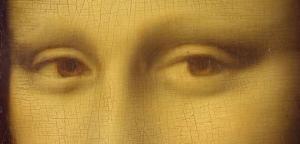Realism: what is it, characteristics and representatives
Realism is the artistic and literary trend that emerged in France in the mid-nineteenth century. Although before that date there were already representations of reality and life, it was not until that moment that it was adopted the term to refer to an artistic movement based on the faithful representation of reality and life everyday.
However the realism concept encompasses a broader sense. Realism is also the predisposition to expose things without idealizing them.
Likewise, the term realism has been part of different disciplines throughout history, such as philosophy or politics, and other later artistic manifestations such as cinema.
Let's know what they are main characteristics of realism of the nineteenth century (painting and literature), as well as his main managers and, on the other hand, realism in other disciplines.
Realism in art
Realistic painting
It arises as a reaction to romantic painting. In a context of industrialization, the artist becomes aware of its consequences and assumes and denounces the social problems derived through his works. Art is a "means" to denounce reality.
Characteristics
In realistic painting, the following particularities stand out:
- Denunciation of the consequences of industrialization.
- Loss of the desire to escape from Romanticism to focus attention on objective reality and the present.
- The man stunned by his overwhelming work is a frequent theme in the plays.
Representatives
The main representatives of French realism in painting are Daumier, Courbet and Millet.
Honoré Daumier (1808-1879)
He was a French painter, sculptor, and cartoonist who was noted for creating critical and satirical works on 19th-century French society. In his lithographs, Daumier sided with the underprivileged, the working classes, and came into conflict with the political class.
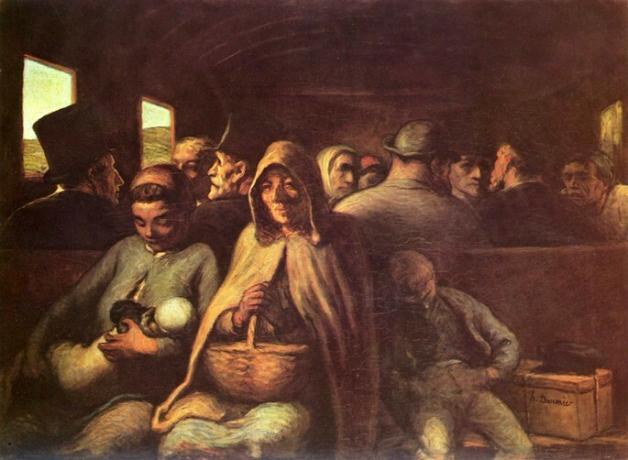
Gustave Courbet (1819-1877)
He was born in France and was the highest representative of realism. In his work the most recurrent themes were linked to daily life: the worker and work, the city and its streets, women and death.
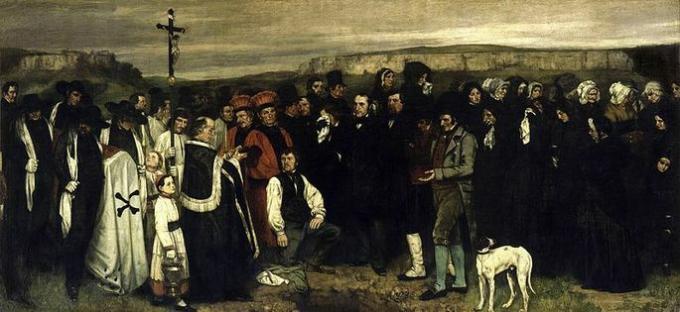
Jean- François Millet (1814-1875)
He came from a humble peasant family. Nature and landscape are elements that were present in his work. In it he showed the life of peasants and humble people in a hard working day.
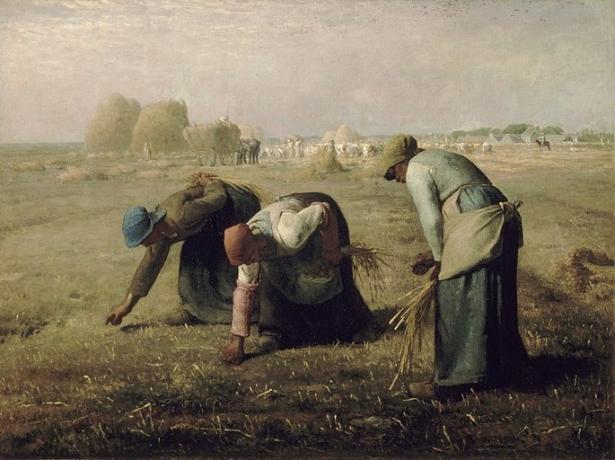
Literary realism
Realism also manifested itself in the literature that emerged in France during the second half of the 19th century. It could be argued that literary realism emerges as a form of break with romanticism: the representation of reality in the face of sentimentality and avoidance. The main characteristics of literary realism are:
- Thematic fidelity of the works with reality.
- Opposition to fantastic literature.
- Complaint and criticism of the social problems of the moment.
- The observation of reality is a fundamental pillar to describe conflicts and transfer them to the reader in a thorough way.
- The novel becomes the genre par excellence during this period.
Stendhal (1783-1842), Honoré Balzac (1799-1850) and Gustave Flaubert (1821-1880) were the greatest exponents of French literary realism.
Other prominent authors of literary realism were: Charles dickens (1812-1870) in England, Benito Pérez Galdós (1843-1920) in Spain or Fyodor Dostoevsky (1821-1881) in Russia.
You can also read: Literary realism
Realism in philosophy
It is the philosophical current that asks questions about what existence is and how it is perceived by the human being.
In modern philosophy, this thought shows that objects perceived through the senses, such as tables and chairs, have an independent existence from the perceived being itself.
This current is opposed to the idealism of Kant or Berkeley. Some of its representatives were: Aristotle, San Anselmo de Canterbury or Santo Tomás de Aquino.
Realism in the cinema
Although the seventh art was born at the end of the 19th century, throughout the 20th century the cinema has also drank from the artistic trend of realism. Some cinematographic movements have tried to "draw" reality in an objective way, making use of the technique and the narrative of the medium.
Thus they highlighted, on the one hand, the French poetic realism during the 30s and, on the other hand, neorealism Italian in the mid-1940s.
French poetic realism
The poetic realism It is the cinematographic trend that emerged in France during the 30s, in the interwar period with a strong influence of literature French naturalist of the 19th century (Emile Zola, Balzac ...) and the cinematographic avant-gardes of the previous decade, especially of the current expressionist.
The term "poetic realism" was coined by the film historian Georges Sadoul. Its main characteristics were:
- Protagonists mired in marginal situations who face a tragic fate.
- Suburban, gloomy and pessimistic atmosphere (cobbled streets, mist, darkness ...)
- Contextualized stories in France, especially in Paris.
- Most films are filmed in studios, however they try to represent reality and "poeticize" it.
- The cinema is seen as a means to express the fears and fears of the moment. All this is reflected, especially, through the photographic aesthetics used.
- The main representatives of this cinematographic aesthetic current were: Marcel Carné, Julien Duvivier, Jean Grémillon or Jean renoir, among others.
Italian Neorealism
The neorealism is another aesthetic trend that emerged in Italy during the 40s of the twentieth century that aims to show postwar society and the daily life of people.
Likewise, this movement seeks to remove the "artifices" of the cinematographic medium and, for this rejects the simulation of environments in the staging and uses non-professional actors and anonymous. This movement has had a strong influence on later cinema. Their aesthetic features most prominent are:
- Low budget productions.
- Cinema committed to everyday life and post-war Italian society. It is intended to be a means of denouncing and protesting the conditions of the most disadvantaged, especially women and children.
- Shooting outdoors. Absence of scenery, the filming locations are real places: streets, squares ...
- Importance of dialogue versus photographic aesthetics.
- The actors are ordinary people, coming from marginal groups. They are not movie "stars" of the moment.
- The most frequently used topics are: job insecurity, unemployment, everyday situations, the situation of women and children in society ...
The greatest representatives of neorealism were: Roberto Rossellini (Rome, open city, 1945) Vittorio de Sica (Bicycle thief, 1948) and Luchino visconti (The earth trembles, 1948).
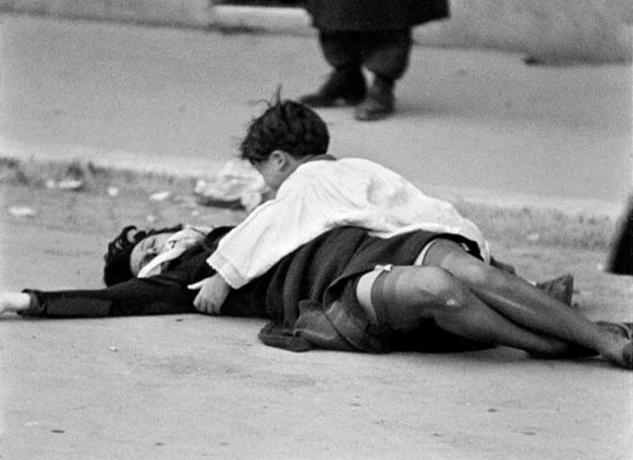
Historical context of realism
The 19th century was marked by serious social and political tensions and by transformations in different aspects. The class society in which the bourgeoisie achieves hegemony also takes place.
Meanwhile there is industrial development and population growth, especially in the large cities, where poverty, social inequality and job insecurity are in order of the day. In this social context and in the midst of the decline of romanticism, realism artists seek to capture the reality of the moment in their works and make a critique.
If you liked this article, You may also like:Naturalism

Graduated in Audiovisual Communication (2016) from the University of Granada, with a master's degree in Script, Narrative and Audiovisual Creativity (2017) from the University of Seville.

